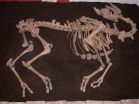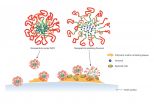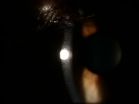AAO-HNSF updated clinical practice guideline: Adult sinusitis
Experts update best practices for treating the 1 in 8 US adults suffering from sinusitis
2015-04-01
(Press-News.org) ALEXANDRIA, VA -- An updated clinical practice guideline from the American Academy of Otolaryngology--Head and Neck Surgery Foundation published today in Otolaryngology-Head and Neck Surgery identifies quality improvement opportunities and explicit actionable recommendations for clinicians managing adult sinusitis, including a greater focus on patient education and patient preference.
"More than ever before, there is a prominent role for shared decision-making between patients and clinicians when managing adult sinusitis--especially in deciding whether to use antibiotics for acute bacterial sinusitis or to instead try 'watchful waiting' to see if a patient can fight the infection on his or her own," explained Richard M. Rosenfeld, MD, MPH, who chaired both the 2007 guideline and the 2015 update.
"Intuitively clinicians often feel that sicker patients benefit more from antibiotics, but our recommendation is that watchful waiting or antibiotics are both appropriate. This empowers patients and clinicians to use antibiotic judiciously, reserving antibiotics for cases that get worse or don't improve over time."
Those shared decisions also are important regarding sinusitis symptom relief options such as pain relievers, topical intranasal steroids, and nasal saline irrigation.
Other differences between the 2007 guideline and the 2015 update include:
more explicit details about the role of pain relievers, topical intranasal steroids, and/or nasal saline irrigation for symptomatic relief of acute bacterial sinusitis;
a recommendation of amoxicillin with or without clavulanate when antibiotics are prescribed, while the prior guideline recommended amoxicillin alone;
several statements about chronic sinusitis, the management of which was not discussed in the 2007 guideline.
This evidence-based clinical guideline for adult sinusitis was updated by a multi-disciplinary panel of experts in otolaryngology-head and neck surgery, infectious disease, family medicine, allergy and immunology, advanced practice nursing, and a consumer advocate.
INFORMATION:
The guideline authors are: Richard M. Rosenfeld, MD, MPH; Jay F. Piccirillo, MD; Sujana S. Chandrasekhar, MD; Itzhak Brook, MD, MSc; Kaparaboyna Ashok Kumar, MD, FRCS; Maggie Kramper, RN, FNP; Richard R. Orlandi, MD; James N. Palmer, MD; Zara M. Patel, MD; Anju Peters, MD; Sandra A. Walsh and Maureen D. Corrigan.
Members of the media who wish to obtain a copy of the guideline or request an interview should contact: Lindsey Walter at 1-703-535-3762, or newsroom@entnet.org. Upon release, the guideline can be found at http://www.entnet.org.
About the AAO-HNS/F
The American Academy of Otolaryngology--Head and Neck Surgery , one of the oldest medical associations in the nation, represents about 12,000 physicians and allied health professionals who specialize in the diagnosis and treatment of disorders of the ears, nose, throat, and related structures of the head and neck. The Academy serves its members by facilitating the advancement of the science and art of medicine related to otolaryngology and by representing the specialty in governmental and socioeconomic issues. The AAO-HNS Foundation works to advance the art, science, and ethical practice of otolaryngology-head and neck surgery through education, research, and lifelong learning. The organization's vision: "Empowering otolaryngologist-head and neck surgeons to deliver the best patient care."
ELSE PRESS RELEASES FROM THIS DATE:
2015-04-01
In 2006 construction began on a new shopping centre in Tulln. The works unearthed various archaeologically valuable objects that were salvaged during rescue excavations. Among these objects was also the complete skeleton of a large mammal.
Large mammal uncovered during excavations in Tulln
"The partly excavated skeleton was at first suspected to be a large horse or cattle," says archaeozoologist Alfred Galik from the Institute for Anatomy, Histology and Embryology at the University of Veterinary Medicine Vienna. "But one look at the cervical vertebrae, the lower jaw ...
2015-04-01
Therapeutic agents intended to reduce dental plaque and prevent tooth decay are often removed by saliva and the act of swallowing before they can take effect. But a team of researchers has developed a way to keep the drugs from being washed away.
Dental plaque is made up of bacteria enmeshed in a sticky matrix of polymers--a polymeric matrix--that is firmly attached to teeth. The researchers, led by Danielle Benoit at the University of Rochester and Hyun Koo at the University of Pennsylvania's School of Dental Medicine, found a new way to deliver an antibacterial agent ...
2015-04-01
People who apply eyeliner on the inner eyelid run the risk of contaminating the eye and causing vision trouble, according to research by a scientist at the University of Waterloo. This is the first study to prove that particles from pencil eyeliner move into the eye.
Dr. Alison Ng, at the Centre for Contact Lens Research at Waterloo, directed the study when she was at Cardiff University in Wales. The team's findings appear in Eye and Contact Lens Science and Clinical Practice, the official peer-reviewed journal of the Contact Lens Association of Ophthalmologists.
Dr. ...
2015-04-01
If you are trying to have a baby, a good night's sleep is more important than ever. A new research report appearing in The FASEB Journal shows that the womb has its own "body clock" that needs to synchronize with the mother's body clock to ensure optimal conditions for fetal growth and development. The inability of a mother's body clock to synchronize with the womb's clock may be at least part of the reason why some women have difficulty carrying a pregnancy to full term. Specifically, the failed synchronization switches off body clock genes in cells lining the womb, which ...
2015-04-01
ANCHORAGE, Alaska -- A team of scientists led by the U.S. Geological Survey found that polar bears, increasingly forced on shore due to sea ice loss, may be eating terrestrial foods including berries, birds and eggs, but any nutritional gains are limited to a few individuals and likely cannot compensate for lost opportunities to consume their traditional, lipid-rich prey -- ice seals.
"Although some polar bears may eat terrestrial foods, there is no evidence the behavior is widespread," said Dr. Karyn Rode, lead author of the study and scientist with the USGS. "In the ...
2015-04-01
Washington, DC--Night owls are more likely to develop diabetes, metabolic syndrome and sarcopenia than early risers, even when they get the same amount of sleep, according to a new study published in the Endocrine Society's Journal of Clinical Endocrinology & Metabolism.
The study examined the difference between night and morning chronotypes, or a person's natural sleep-wake cycle. Staying awake later at night is likely to cause sleep loss, poor sleep quality, and eating at inappropriate times, which might eventually lead to metabolic change.
"Regardless of lifestyle, ...
2015-04-01
Washington, DC--Exposure to the endocrine-disrupting chemical bisphenol A during pregnancy may raise a mother's susceptibility to weight gain and diabetes later in life, according to a new animal study published in the Endocrine Society's journal Endocrinology.
A chemical used to manufacture plastics and epoxy resins, bisphenol A (BPA) is found in a variety of consumer products, including plastic bottles, food cans and cash register receipts. The U.S. Centers for Disease Control and Prevention have estimated that more than 96 percent of Americans have BPA in their bodies.
BPA ...
2015-04-01
Cambridge, Mass. April 1, 2015-- A collaborative study between researchers from the Broad Institute of MIT and Harvard, Massachusetts Institute of Technology, and the National Center for Biotechnology Information of the National Institutes of Health (NIH-NCBI) has identified a highly efficient Cas9 nuclease that overcomes one of the primary challenges to in vivo genome editing. This finding, published today in Nature, is expected to help make the CRISPR toolbox accessible for in vivo experimental and therapeutic applications.
Originally discovered in bacteria, the CRISPR-Cas9 ...
2015-04-01
Many microbes cannot be cultivated in a laboratory setting, hindering attempts to understand Earth's microbial diversity. Since microbes are heavily involved in, and critically important to environmental processes from nutrient recycling, to carbon processing, to the fertility of topsoils, to the health and growth of plants and forests, accurately characterizing them, as a basis for understanding their activities, is a major goal of the Department of Energy (DOE). One approach has been to study collected DNA extracted from the complex microbial community, or the metagenome, ...
2015-04-01
NEW YORK (April 1, 2015) - Hospitals and health systems preparing for and treating patients with Ebola Virus Disease (EVD) in the fall of 2015 faced unexpected challenges for ensuring safety of staff, patients and the community. The experiences are detailed in two studies published online in Infection Control & Hospital Epidemiology, the journal of the Society for Healthcare Epidemiology of America (SHEA).
In a case study of the care of two patients with confirmed or suspected EVD at the National Institutes of Health (NIH) Clinical Center's Special Clinical Studies Unit, ...
LAST 30 PRESS RELEASES:
[Press-News.org] AAO-HNSF updated clinical practice guideline: Adult sinusitis
Experts update best practices for treating the 1 in 8 US adults suffering from sinusitis


